Urban Gardens in Poland – How a Polish Tradition Could Inform American City Planning
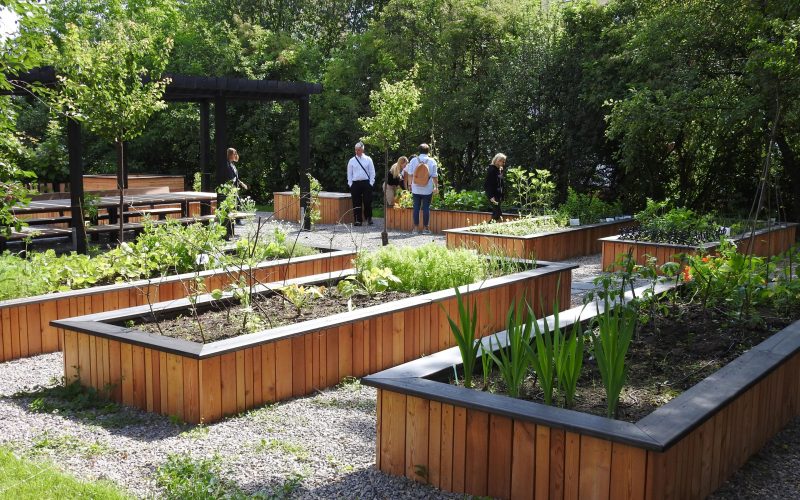
Introduction
In recent years, privately-owned urban vegetable gardens in Poland have received a lot of attention from scholars as well as popular media.
Urban gardens in Poland are areas of land, often located within city limits, divided into small plots where individual families that often live in high-rise apartments can grow their own fruits and vegetables, or simply relax in the shade of an apple or cherry tree on a hot summer day. These gardens have been an integral part of urban living for hundreds of years and became particularly popularized when Poland was under communist rule.
Until recently, these gardens were something for retired people, but the pandemic and resulting cabin fever as well as skyrocketing prices of land made urban gardens in Poland cool again. The prices of the garden plots tripled in most Polish cities and more young residents found the gardens appealing. It can be said that urban gardening made a big comeback in Poland and even young professionals began to rediscover urban gardening for leisure, stress management, and work life balance.
With increasing inflation many people also saw the benefit of growing their own food again. And with the attention to healthy living and sustainability, many Polish parents found urban gardens to be the best way to provide their children with a more balanced experience free of video games and screens. These economic and social factors have charted a course for this traditional Polish summer pastime to continue thriving for generations to come.
I am myself an example of a 1980s/1990s child who grew up in Poland during the 1980s/1990s transition and economic boom that afforded me with opportunities to go to malls, play video games, and enjoy modern, Western activities. Nevertheless, I spent my summers at my grandparents’ small urban garden planting tomatoes, picking strawberries, and helping my grandmother can fruits and pickle cucumbers.
I moved to live in the US where I raise my children in the Upper Peninsula, which interestingly is often described as a food desert. Every summer I take my children to Poland to my grandparents’ urban garden, located in the city, so they can enjoy the same connection to food and nature that I had had as a child. The Polish urban gardens are a normal part of growing up yet they seem to be a fairly foreign concept in the American cultural context.
Western societies have been going away from individual food production for decades mainly focusing on mass food production, industrialization, urbanization, and developing a service-based and high-tech economy. While unquestionably leading to much progress, industrialization and urbanization have been a main force behind adjusting the daily and seasonal rhythm of how humans function. Both processes took people away from living close to nature to urban environments in organized housing units located in a concrete jungle or suburban planned communities.
In the last century, living close to nature was seen as outdated and up until very recently the creative class was seen as the group fueling of our economy and defining the meaning of success. Soon we found ourselves in a situation where we worry about food deserts not only in urban areas but also in rural areas. We created societies where the rural population does not possess the skills to farm and the urban population does not understand where their food comes from.
At the same time, and not surprisingly, we are facing challenges related to depression, anxiety, and loneliness in the society. We are now trying to fix them by introducing goals and targets which will bring us back to nature. Discussions on sustainable communities, sustainable food production, and a better environment have become the focus for academia, politics, media and online communities, as well as big organizations. That said, the concept of urban gardens may be a very easy solution to a seemingly large problem. Urban gardens in the United States are an opportunity to bring green spaces to cities and create opportunities for the residents to grow their own food even in most urbanized parts of our country.
Community gardens in the western world are not a new phenomenon but in the last decade they have been receiving more attention. Community gardens are often seen as valuable in the discussion on sustainable community creation and more specifically on sustainable food systems and the well-being of residents. Activists and scholars interested in food justice and food security advocate for the creation of community gardens in many American cities and most recently even in rural food deserts. These movements go beyond the United States but many note that, although community gardens are trendy today, they are nothing new as they have a long history in many countries around the world, the US included.
The United Nations Sustainable Goals (SDGs) introduced in 2015 and adopted by all United Nations Member States emphasize the need for sustainable development around the globe. The 17 Sustainable Development Goals (SDGs) serve as a call for action by all countries to create a global partnership to address a variety of pressing issues such as ending poverty, improving health and education, reducing inequality, and tackling climate change. Analyzing several of the SDGs it is clear that these challenges apply to both countries in the developed and in the developing world but the solutions to the challenges will differ from one country to another.
The Goals of Urban gardens in Poland, while established already in the 1940s and further evolved in 1980s, interestingly align with what UN Development goals want to achieve with a few of their 17 Development Goals. Specifically, Target 12.8 seeks to ensure that there should be awareness among people worldwide about the lifestyle that is in harmony with nature. Target 2.1 challenges nations to end hunger and ensure access by all people, in particular the poor and people in vulnerable situations, including infants, to safe, nutritious and sufficient food all year round by 2030. Target 11.3 looks to enhance inclusive and sustainable urbanization and capacity for participatory, integrated and sustainable human settlement planning and management in all countries by 2030. Target 11.7 strives to provide universal access to safe, inclusive and accessible, green and public spaces, in particular for women and children, older persons and persons with disabilities by 2030.
As early as 1946 with a few updates in 1949, 1981, and in 2014, urban gardens in Poland have had very specific goals that interestingly correspond with those of the UN (Polish Government Statistical Office):
- Meeting the leisure and recreational needs of the society by enabling the cultivation of horticultural crops.
- Improvement of social conditions of members of local communities.
- Helping families and people in a difficult life situation and equalizing their chances.
- Integration of a multi-generational families, raising children in healthy conditions and maintaining the activity and health of retirees and pensioners.
- Social integration of people at retirement age and people with disabilities.
- Restoring brownfields to communities and nature.
- Protection of the environment and nature.
- Improving of ecological conditions in communities.
- Shaping a healthy human environment.
- Creating conditions for making green areas available to local communities.
All the above-mentioned goals have been supported by local laws. Local governments have been protecting this highly valuable land from being rezoned and redeveloped.
Community Gardens in the US
Community gardens as we know them today in the United States are a relatively newer concept but the history of community gardening can be traced to practices of Native American tribes and First Nations peoples who gardened for generations before the arrival of Europeans.
Today urban gardens in the US “can help to revitalize neighborhoods affected by urban decline, build a sense of community, grow healthy food, teach environmental education, and create a sense of place”. (Smithsonian Gardens 2023)
In most recent history, Detroit became the first city to use vacant lots for urban gardening programs known as “Pingree’s Potato Patches”. The gardens were formed in the 1890s as a response to the 1893 economic recession which left the industrial workers, often immigrants, unemployed. Many Polish and German immigrants lost jobs and were unable to purchase food but they possessed the skills to farm. The municipality provided unemployed laborers with plots of land on vacant city lots, along with seeds and tools needed to start urban gardens (Smithsonian Gardens 2023). Soon after, Boston, San Francisco, and Philadelphia adopted similar programs aimed at helping the poor on a temporary basis. (Smithsonian Gardens 2023)
In the United States “community gardens” originated during around the world war (I and II) period with the purpose of addressing food shortages. Later, since the 1960s they were more local organizations and efforts aimed at revitalizing neighborhoods. Even today, the idea of urban revitalization involves elements of community gardening. In that sense, community gardens are one of the early signs of neighborhood revival, as opposed to the Polish example where urban gardens have been a critical element of city life for decades and a shared experience for people and families from all classes and walks of life.
Community Gardens in the Upper Peninsula of Michigan
Community gardens in the United States are often run by local non-profit organizations, have a smaller area than those in Poland that inspired this paper, and serve a much more limited number of residents. Residents rent them on an annual basis and they do not have a built infrastructure such as cabins or shacks. The Marquette Community Gardens were formed in 2003 with assistance from the Marquette Rotary Breakfast Club and determination of a small group of Marquette gardeners. The Marquette Community Gardens have two sites. According to their website: the gardens are open to Marquette City residents who sign up for beds in the spring and may return the next year if they are in good standing at the end of the season. Residents pay an annual rental fee of $15 to $25 and the season runs from May 1st to October 31st. There are a variety of rules and requirements that need to be met in order to maintain a bed in the gardens such as: the use of chemical insecticides, herbicides and fungicides is strictly forbidden and organic gardening practices are encouraged, compost bins are provided and there is a general overseeing of how residents run the gardens. (Marquette Community Gardens)
Urban Gardens in Poland
Currently Poland has 5000 urban garden areas that are divided into individual plots occupied by individual families. At the individual level, in those 5000 urban garden areas there are over 966,000 individual plots that cover an area of 44 thousand hectares (approximately 109,000 acres). (Polish government). Garden owners sometimes live close, sometimes across the city, traveling to their urban gardens by car, public transport, or walking. As I think back to my childhood memories and compare them with what I see today, it is clear that the nature of the gardens has changed. In the past, most people used them to grow food, some people even raised animals for personal food consumption such as rabbits or chickens. Today it seems like there is a more recreational usage of the urban gardens that still focuses on food production but has increasing elements of leisure. Walking through a sample urban garden area, it is easy to notice that some plots are planned to be purely recreational with nice lawns and many flowers. Some are planned as flower meadows but it is not uncommon to see those that I remember from my childhood filled with carefully planned rows that are decided to a specific kind of vegetables and fruits. Some just have fruit trees whereas at others you will find small green houses for more careful growing of vegetables.
Many of the urban gardens have small cabins that the owners use for personal use however they are not zoned for permanent residency. Only recreational stays are allowed by city law. The biggest group of urban gardeners are retirees with almost half of all participants (46,9%) representing this group. The next 24% of participants are considered to be blue collar workforce participants. There is an increasing number of professionals who have urban gardens currently representing 18,4% of all members of the association. There is also an increasing number of members who claim to be unemployed. (Polish Gardeners Association). In addition, there is a higher number of younger residents who are regaining interest in urban gardening. On the one hand, the COVID pandemic accelerated this trend but many members also say that there is nostalgia associated with this trend. Younger professionals are returning to urban gardening to find balance between their white-collar jobs and their mental health. At the same time, an increasing number of activities related to urban gardening can be observed in social media with Instagram accounts promoting urban gardening.
The history of urban gardens in Poland dates back to the 16th century. In 1575 first urban gardens emerged in Koźmin Wielkopolski. Historians discuss changes in urban garden history during the 1800s (Netczuk 2015) but it was not until 1897 when Urban Gardens as we know them today (called in Poland Family Garden Plots – “ROD”) emerged in Grudziadz. Dr. Jalkowski, the founder, advocated for green leisure spaces to relax, exercise, sunbathe, and interact. The gardens were call “Sunny Baths” (ROD „Kąpiele Słoneczne”) to describe the nature of these spaces (KapieleSloneczne.pl) mainly focusing on leisure.
Later in 1902, Warsaw created urban gardens and soon in 1909 the city of Katowice opened its first urban gardens. The main goals of these spaces was to provide opportunities for urban residents to satisfy the need for personal food consumption by growing seasonal fruits and vegetables. This goal was amplified during WW I, WW II, and during communism, when urban gardens allowed the residents to address food insecurity created by the invasion and destruction of urban centers and disturbed food delivery. (KapieleSloneczne.pl)
Quotes from Urban Garden users in Poland
Many members of the Urban Garden Association in Poland comment on the nostalgia associated with spending time at their gardens. Memories related to simpler times. Memories related to spending time with grandparents and other family members. Memories related to the educational, hands-on activities that they had when they were children. They are trying to recreate the same experience for their children, and provide compelling alternatives to social media.
I took a walk through one of the Urban Gardens in Poznan, Poland in June of 2023. I spoke with a few visitors and garden owners to understand why they come to their garden plot, and what they hope to achieve in using the garden. Below are select responses that provide insight into the various benefits of urban gardening:
- “I am 42 and I decided to rejuvenate my parent’s veggie garden. I want my children to have exposure to how food is being grown.”
- “I am 60 now and I remember spending my childhood at my grandparent’s veggie garden. My grandma had everything from flowers to vegetables to fruits and at certain point she even had two pigs that she raised to supplement her food supply. Those were simple times.”
- “I am 87 and widowed. Most of my neighbors passed away. I love seeing their children and grandchildren working in the gardens now. They often ask me for advice. I share my knowledge with them. I am a leader in my community. The young people respect me and they often offer help when I need it.”
- “I have a corporate job and I am fed up with the rat race. On Saturday I leave my cell phone at home and I come to my veggie garden. I pick up fresh flowers and fruits and I read a book to maintain mental balance.”
- “My parents passed away and I was not coming to this garden for a long time. With the increasing prices of fresh foods, I decided to start growing my own food, pickling vegetables, jarring fruits, and freezing whatever I can grow here. It saves me a lot of money. I freeze cherries and dill. I make strawberry jam. I make juices that I drink in winter. I also grow herbs that I dry so they last me all winter. I was very lucky to find a notebook that my parents put together. It had a schedule of when work needs to be completed. I also found a lot of gardening tools that I use.”
- “We have a community here. It is truly multigenerational. Everyone knows each other, each others’ children and grandchildren. People share advice on gardening, they grill with their families, kids run around. It is like the time stops here.”
Summary
The experience with Polish urban gardens provides an interesting study of how urban environments can foster critical skills most often associated with rural environments. Additionally, they also indicate how social connections but also private possession of valuable land can contribute to a vibrant community that extends beyond neighborhood revitalization. It will be interesting to follow how American cities pursue opportunities to leverage urban green spaces to not just address localized food shortages, but to foster a culture of using nature to improve lifestyles and experiences of urban residents.
References:
Kapiele Sloneczne.pl https://kapielesloneczne.pl.tl/Historia-Ogrodu.htm (accessed on 4/28/2023)
Marquette Community Gardens https://www.marquettecommunitygardens.org/about-us) (accessed on 5/1/2023).
Netczuk Ł. 2015. Historia ogrodnictwa i ruchu działkowego na ziemiach polskich. Zarys problematyki badań i studiów źródłowych. Pdf.
Polish Gardeners Association http://pzd.pl/archiwum/strona.php?421 (accessed on 5/1/2023)
Polish Government https://www.sejm.gov.pl/sejm7.nsf/InterpelacjaTresc.xsp?key=6C33A423 (accessed 5/1/2023).
Polish Government. Statistical Office. https://stat.gov.pl/metainformacje/slownik-pojec/pojecia-stosowane-w-statystyce-publicznej/1376,pojecie.html (accessed on 5/5/2023)
Smithsonian Gardens Community of Gardens: https://communityofgardens.si.edu/exhibits/show/historycommunitygardens/vacantlot#:~:text=The%20first%20community%20gardens%20in,vacant%20lots%20in%20the%20city (accessed on 4/27/2023).
United Nations Department of Economic and Social Affairs Sustainable Development https://sdgs.un.org/goals (accessed in 4/26/2023)

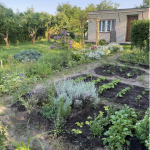
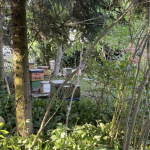
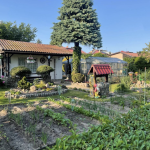
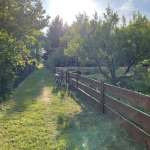
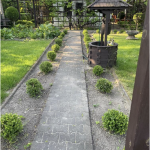
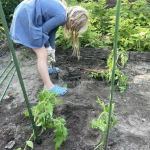

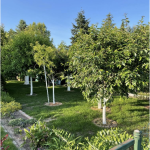



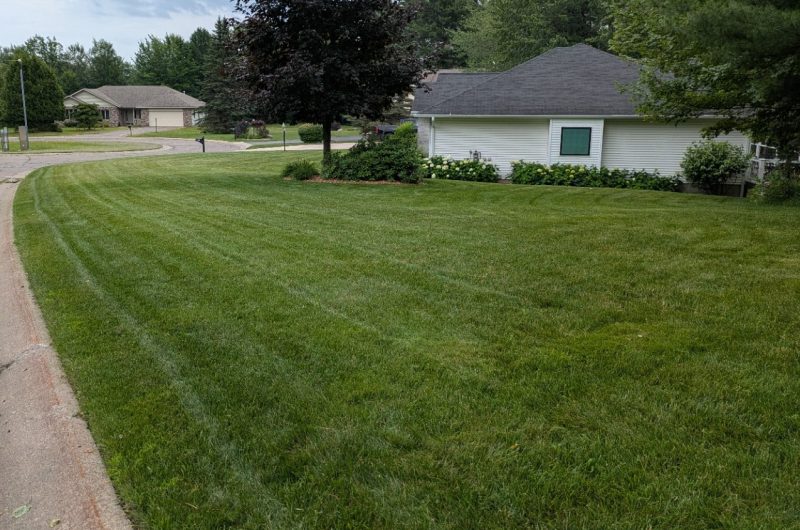

Excellent article, thanks Dr. Kusek. I am the retired executive Director of the Michigan Potato Industry Commission. My career was spent working with large commercial potato farmers in Michigan. Over the years I learned the value of urban farming. I live in a rural area of Michigan and produce asparagus and garden vegetables. My gardening is for personal enjoyment however brings about a bountiful crop of asparagus that I share with neighbors and friends. What a wonderful experience that has been over the years. Thanks for the excellent reporting on Polish urban agriculture.
as a farmer who actually grows food (not commodities) I have seen my community in the eastern UP go from being quite self-sufficient 40 years ago, with many small dairy farms and many folks gardening to a food desert with a lot of hopelessness, prison guards and drug addicts both from the street drugs and the doctor’s office. The quality of nutrition and the complete loss of skills to provide some basic nutrition for yourself and your family is and has been a great concern to me. It only took 2 generations. Sadly enough, the Polish immigrants who came to our area in the late 1800’s were able to thrive, but their heirs are not doing so well.
Take a look at what the Partridge Creek group is doing over in Ishpeming; they’re on the right track. Also, notice the number of seed libraries that have sprung in the U.P. over the last few years: Marquette, Gwinn, Ishpeming, Houghton, Calumet, to name a few. These are hopeful signs, but a whole lot more of this type of local food production is desperately needed.